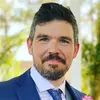First comprehensive T-TEER resource examines best practices for tricuspid valve repair
The Society for Cardiovascular Angiography and Interventions (SCAI) has released a new comprehensive resource for interventional cardiologists, cardiac imaging specialists and other clinicians hoping to learn more about ins and outs of transcatheter tricuspid edge-to-edge repair (T-TEER).
T-TEER, sometimes referred to as transcatheter tricuspid valve repair, is a minimally invasive treatment option for patients who present with tricuspid regurgitation. The U.S. Food and Drug Administration approved Abbott’s TriClip device in April 2024, making it the first T-TEER offering available on the market. Abbott then requested that the U.S. Centers for Medicare and Medicaid Services (CMS) consider developing a national coverage determination for T-TEER, and a decision from CMS is expected anytime.
The SCAI resource is a free eBook that outlines the best practices associated with performing T-TEER. It was funded with help from Abbott.
“There are currently no textbooks on this procedure,” co-author Jason H. Rogers, MD, professor of cardiovascular medicine and director of the interventional and structural cardiology fellowship programs at the University of California Davis Medical Center, said in a statement. “This eBook is not just a guide—it’s the first major publication dedicated to T-TEER best practices. By gathering insights from experts who pioneered this procedure in Europe and North America, we have created a comprehensive roadmap for safe and effective adoption of this therapy worldwide. We wanted to ensure that every interventionalist, regardless of location or resources, has access to the best information possible.”
“One of the biggest challenges in tricuspid interventions is imaging,” added co-author Rhonda Miyasaka, MD, a cardiovascular imaging specialist with Cleveland Clinic. “Imaging is the foundation of a successful T-TEER procedure, yet the tricuspid valve presents unique visualization challenges that require specialized techniques. From preprocedural planning and real-time guidance, the eBook provides a clear, practical guide to transthoracic and transesophageal echocardiographic imaging to help clinicians optimize visualization, device positioning, and procedural outcomes. By equipping interventionalists and echocardiographers with the knowledge to optimize imaging, we aim to improve procedural success rates and ensure the best possible outcomes for patients undergoing T-TEER.”
According to SCAI, a similar book focused on TEER has been downloaded more than 10,000 times around the world.
Click here for more information about the eBook, including a link to download it in full from the SCAI Online Learning Center.

